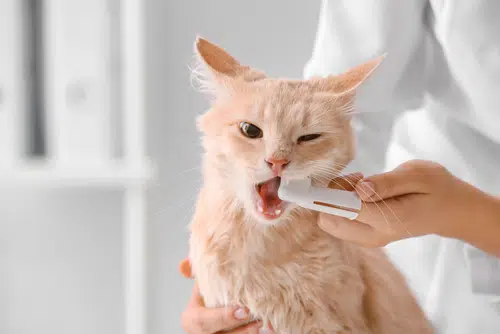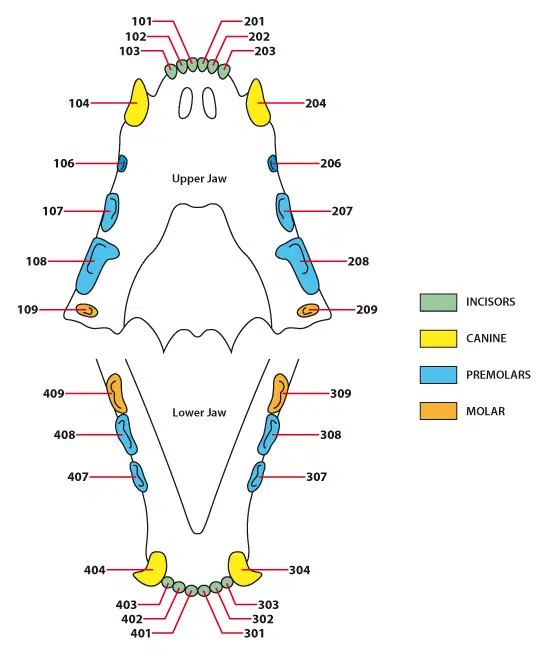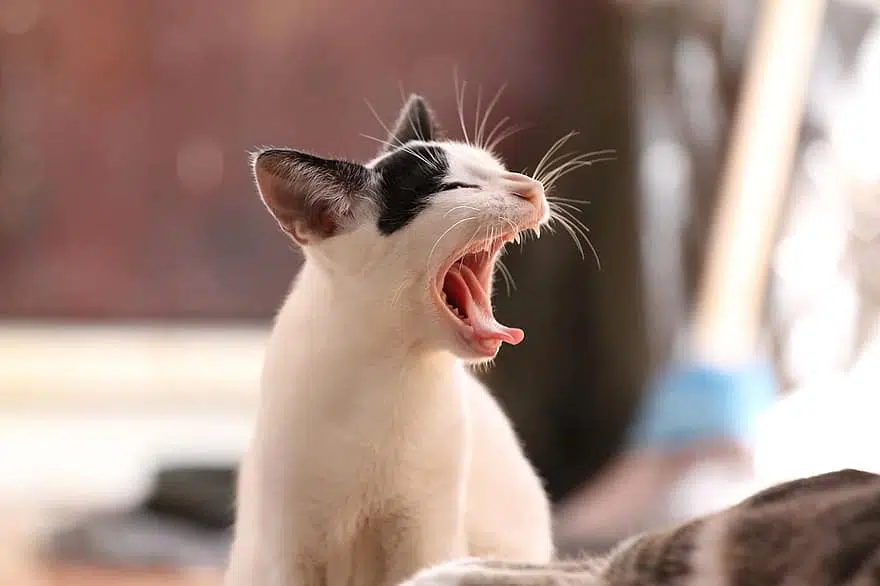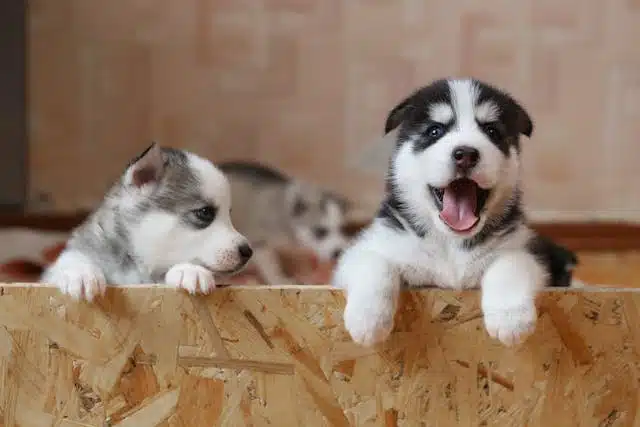Home » Blog » Pet » Pet Health & Safety » Cat Teeth: Keeping Those Fangs Sparkly
Categories
Tags
animal welfare
breed profile
buying a car
buying a pet
Car
car accessories
car care
car features
car insurance
Car safety
car sales
car service
cat
cat behaviour
cat body language
Cat Breeds
cat food
cat insurance
comprehensive car insurance
Dog
Dog Behaviour
dog body language
Dog Breeds
dog food
Dog Insurance
dog training
eco friendly cars
Kitten
New Car
pet accessories
pet activities
Pet Adoption
pet breeders
pet days of the year
pet fun stuff
Pet Health
pet insurance
pet parenting
Pet Safety
pet services
Puppy
rescue pets
road safety
road trip
safe driving
Recent Blog:
Facebook Posts
13 hours ago
Are intestinal worms setting up camp in your dog’s gut without paying rent? Here’s how to spot the main culprits and get rid of them too:![]()
![]() Preventing, Identifying and Treating Intestinal Worms in Dogs - bit.ly/43YjCKu
... See MoreSee Less
Preventing, Identifying and Treating Intestinal Worms in Dogs - bit.ly/43YjCKu
... See MoreSee Less
Preventing, Identifying and Treating Intestinal Worms in Dogs
www.pd.com.au
Intestinal worms, such as roundworms in dogs are one of the least glamorous topics on the planet. These intestinal parasites that basically use our dogs
PD Insurance
with Dogs West.
2 days ago
We enjoyed meeting #breeders #doglovers and members at the Dogs West Open Day. Special thanks to our partner Dogs West for organising an incredible event. There is still time to enter our pawsome competition. Click here for details: bit.ly/4covyce![]() #PDinsurance #dogswestopenday #dogswest
... See MoreSee Less
#PDinsurance #dogswestopenday #dogswest
... See MoreSee Less
3 days ago
Did you know? The Manx is a breed that is known for its lack of a tail, which is caused by a genetic mutation.
... See MoreSee Less
Cat teeth stay clean by themselves, right? Erm, wrong. Sadly, where there are teeth, there is plaque, which is essentially a sticky film of bacteria. And yes, this bacteria clings to teeth for dear life, seeking out innovative ways to multiply and conquer.
Which is why you, good cat mum and cat dad need to have your armoury in place and make it harder for plaque to get a foothold. (No this is not a toothpaste ad).
In this article, we’ve got some great DIY tips for keeping your kitty’s pearly whites in ship shape. Read on to find out.
How to keep cat teeth in mint condition
Ways to keep your meowser’s cat teeth clean range from regular cleaning at home to occasional check-ups with a vet. (At this point, you’ll be happy to know that our Deluxe cat insurance includes dental cover.)
Here’s what you can do to keep your cat’s teeth clean and strong:
- Cat food. Speak to your vet about a specially formulated diet according to their breed, age, and overall nutritional needs. Choosing the right food helps keep teeth healthy.
- Professional teeth cleaning. This is a vet treatment under general anaesthetic that can be invaluable in good dental health and preventing tooth loss.
- Annual teeth checks. This needs to be done to avoid dental problems developing or worsening.
- Brushing your cat’s teeth. Like with humans, routine brushing helps maintain healthy teeth and gums and keeps plaque in check.
Brushing your cat’s teeth requires first getting them used to the idea. Here’s how…

Brushing cat teeth
Remember how your mum and dad got you into brushing your teeth at a set time of the day? It’s good to have a set time to brush your cat’s teeth too. Establishing a routine gives your cat a sense of control because they know what to expect and when.
You won’t want to dive straight in; rather, follow these steps and get your cat used to the idea first:
- Wait until your cat is calm (like after playtime – perhaps with some catnip. Read what does catnip do)
- Put a blob of pet toothpaste on your hand and let kitty smell and taste it
- Do the same, only with the toothpaste on your pet toothbrush (here’s a kit with both toothpaste and brush)
- Pull back your cat’s lip and softly place the toothpaste on her tooth with the brush
- Let the brush rest on her teeth for a few seconds
- Once your kitty’s used to this, try out brushing her teeth
- Remember to pet your cat lovingly to say well done!
Each step can be repeated over several days, so you get your cat feeling super comfy before starting. A good first experience of teeth brushing will really help create a positive association going forward, for both of you.
So, don’t pressure yourself too much as it can be nerve-wracking for you too. Give yourself and your cat a week or two to follow the steps and feel well prepared.
How many teeth do cats have
Just like humans, cats have two sets of teeth over their lifetime. Here’s what your feline’s set of teeth comprise:
- Kittens have 26 teeth
- Adult cats 30 teeth
Your kitten will shed their baby teeth which will be replaced by their adult set around six months. This happens to also be the age when a cat is old enough to start producing litters. Speaking of which, read up on whether to spay and neuter cats.
Here’s what your cat’s full adult set of teeth look consist of:

Cat dental care: Signs to lookout for
Cats are good at adapting and concealing pain. It can be difficult to pick up your cat’s in pain because of dental issues.
Some basic signs to keep watch for include:
- Swollen or bleeding gums
- Pawing at their mouth
- Unhealthy looking fur because of grooming less
- Appetite loss
- Weight loss
- Bad breath
- Drooling
If your cat has a combination of bleeding gums and bad breath, this can indicate a need for treatment. When you notice any of these signs, it’s better to be safe than sorry, so it’s advisable to get your cat the soonest vet appointment.
If you’re not squeamish, or you want to scare yourself into taking good care of your cat’s teeth, watch this video on tooth removal in cats:
Dental disease in cats
Although our cats seem to be wild half the time (some of them anyway), they’re very much domestic creatures of comfort. And given this contemporary lifestyle that includes a diet of processed foods our cats need dental care just like we do.
That’s because bacteria naturally grow on teeth, but in addition, a cat may have excessive wear and tear or simply break a tooth.
If this happens, cats can have any of the following dental problems or diseases:
- Gum diseases. Gingivitis and periodontitis can lead to tooth decay and loss if untreated
- Stomatitis. This is a painful inflammation in the mouth
- Tooth fracture. Results in pain and swelling of the soft tissue
- Wear and tear. Can cause discomfort
- Tooth resorption. This is common in cats and causes teeth to weaken then breakdown
If treated timeously, some of these conditions can be halted and fixed. Your vet might prescribe antibiotics, anti-inflammatory medication and a tooth cleaning or extraction.
Cat insurance plans with dental cover
It’s important to schedule annual dental check-ups for your cat. You may know from human teeth how hefty the price of fixing teeth can be compared to avoiding teeth problems from the get-go.
Poor oral hygiene in cats can result in painful, hard to treat and extremely expensive dental issues.
Don’t fret, cat insurance helps you cover the costs of an array of treatments from non-routine vet visits and accident care to prescription medicine. And as we mentioned earlier, our Deluxe plan covers your cat for dental diseases, extractions and more.
Share On:




